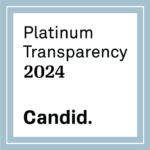Tolerability & Dosing
A critical part of defining the value of a new therapy is through evaluating the safety and efficacy. As targeted therapies have emerged and are used for longer periods of time, understanding the tolerability of a therapy and identifying the optimal dosage have become critical components of drug development. Friends of Cancer Research (Friends) worked with stakeholders to propose a definition of tolerability that includes the patient perspective:
“The tolerability of a medical product is the degree to which symptomatic and non-symptomatic adverse events associated with the product’s administration affect the ability or desire of the patient to adhere to the dose or intensity of therapy. A complete understanding of tolerability should include direct measurement from the patient on how they are feeling and functioning while on treatment.”
Friends’ work in this space focuses on key considerations for dosage-finding studies that include an understanding of tolerability.
Visit us on LinkedIn and X to stay up to date with #FriendsDosing #DoseOptimization.
Selecting the optimal dosage requires a robust understanding of a therapy’s efficacy, safety, and tolerability. Traditionally, early-phase dosing trials aimed to identify the maximum tolerated dose (MTD), an approach designed for cytotoxic chemotherapies where an increase in dose leads to increased tumor suppression. In contrast, newer targeted therapies and immunotherapies may not require dosing at the MTD for maximal efficacy and a lower dose may provide similar efficacy with an improved safety and tolerability profile for patients.
Recent initiatives from the Food and Drug Administration (FDA) Oncology Center of Excellence (OCE) like Project Optimus and guidance indicate a desire for improved optimization in early phase development of oncology drugs and signal a need for renewed approaches to early phase dosing strategies. New strategies and tools are needed to support the timely identification of the optimal dose, including approaches for evaluating and comparing tolerability across dosages.
Since 2013, Friends has convened stakeholders across government, academia, advocacy, and industry to discuss strategies for optimizing the dosing of oncology drugs, including incorporating the patient voice in assessment of tolerability. See our timeline below to review details of the steps we have taken to find solutions.
Data collected throughout drug development provides important insights that enable drug developers, providers, and patients to identify the appropriate drug at dosages that are well tolerated. Earlier characterization of tolerability, including capturing patient-reported outcomes (PROs) during early phase clinical trials, can support a foundational understanding of a therapy’s symptom and functional impacts, inform the design of the registrational trial, and ultimately help to ensure timely identification of the optimal dosage(s) for approval and use in clinical practice.
Scroll through to see how we’ve been working to develop solutions around tolerability for more than ten years.
Project Outcomes
2023
- Friends convened a multi-stakeholder working group to discuss and align on approaches for implementing novel data collection in early phase clinical trials and how to interpret the totality of evidence to select optimal dosage and support a comprehensive understanding of dosage and tolerability. Findings from these discussions were compiled into a white paper that was discussed during the Friends Annual Meeting.
2022
- Incorporating Patient Reported Outcomes (PROs) to Inform Dose Selection and Optimization was a topic during Friends’ Annual Meeting. The white paper identified opportunities, challenges, and solutions for using PROs to inform dosage optimization in cancer clinical trials. It also highlighted ways PROs can characterize tolerability and support dosage optimization, a clinical trial design framework for incorporating PROs into dosage optimization studies, and opportunities for using PRO findings from early phase studies to inform later phase study designs and to complement traditional safety data for regulatory decision-making.
2021
- Friends’ Annual Meeting featured a panel and white paper that described current challenges to the implementation of dosage-finding studies in oncology, opportunities to improve dosing strategies given these ongoing challenges, and key considerations for selecting appropriate dosage optimization strategies in oncology. Following the Annual Meeting, panelists answered additional questions from the audience in a blog post.
- Friends convened a working group and hosted a meeting to identify opportunities to optimize the Breakthrough Therapy Designation, which led to the development of a dosing “snapshot” document. This tool facilitates early conversations between FDA and sponsors on dosing strategies (see Appendix of this white paper).
2018
- Friends gathered key stakeholders to develop a new working definition of treatment tolerability that incorporates the patient experience by collecting rigorously developed PRO data to inform symptomatic toxicity and functional information. The group aligned on the position that a complete understanding of tolerability should include direct patient measurement of how they are feeling and functioning while on treatment.
2015
- Friends’ 2015 Annual Conference on Clinical Cancer Research featured a panel discussion and white paper on, “Capturing Symptomatic Adverse Events from the Patients’ Perspective: The Potential Role of the National Cancer Institute’s PRO-CTCAE Measurement System.” Since then, many of the operational issues discussed in the paper have been addressed supporting wider implementation and use of the NCI Patient Reported Outcomes version of the Common Terminology Criteria for Adverse Events (PRO-CTCAE).
2013
- Friends’ 2013 Annual Conference on Clinical Cancer Research featured a panel discussion and white paper on “Optimizing Dosing of Oncology Drugs.” The white paper identified the challenges of optimizing the dosing of oncology drugs and described potential solutions to improve dosing and administration guidance for health care professionals.
